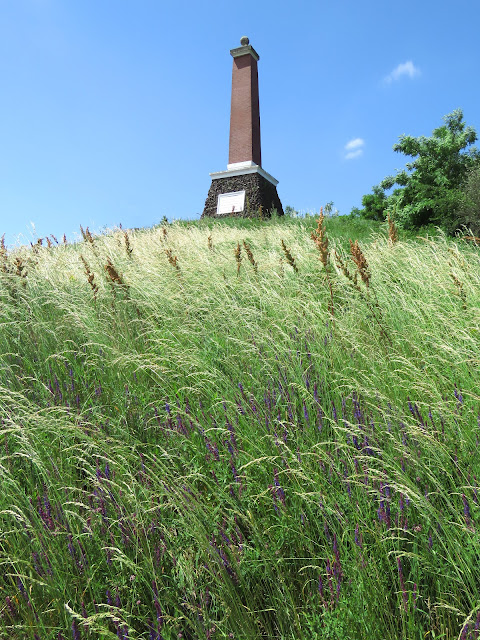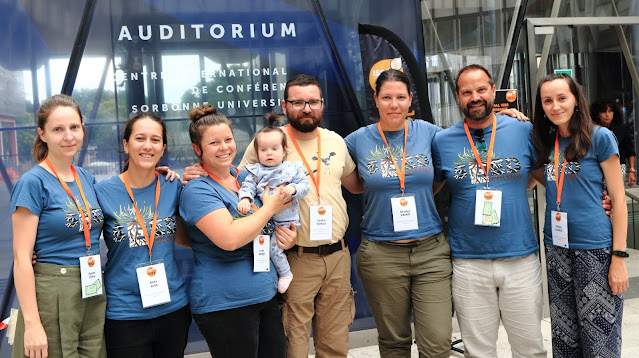Our newest paper about the importance of cultural values in the conservation of steppe grasslands has recently been published in Conservation Biology.
Deák, B., Bede, Á., Rádai, Z., Dembicz, I., Apostolova, I., Batáry, P., Gallé, R., Tóth, C.A., Dózsai, J., Moysiyenko, I., Sudnik-Wójcikowska, B., Zahwatowicz, M., Nekhrizov, G., Lisetskii, F., Buryak, Z.A., Kis, S., Borza, S., Godó, L., Bragina, T.M., Smelansky, I., Molnár, Á., Bán, M., Báthori, F., Árgay, Z., Dani, J., Kiss, R., Valkó, O. (2023): Contribution of cultural heritage values to steppe conservation on ancient burial mounds of Eurasia. Conservation Biology https://doi.org/10.1111/cobi.14148
Ancient burial mounds built in historical times are not only important monuments of our historical heritage, but also act as refuge for steppe habitats and species. Despite their small size they often act as biodiverse spots in the landscape even though the landscape has been transformed to croplands or urban areas.
In our recent paper published in Conservation Biology we aimed to shed light on the connection of cultural values and biodiversity present on the mounds. For this we used a dataset containing more than one thousand kurgans distributed from Hungary to Mongolia.
We found that the conservation potential of the kurgans was highly supported by cultural values confined to the kurgans (such as ancient statues, medieval border marks, small churches, crosses or old cemeteries) that were important for the local communities. By protecting and maintaining cultural values people prevent intensive land use, and also ensure an extensive management for the grasslands on the mounds. By that indirectly they also maintain steppe habitats and species. This kind of protection is provided by the own willingness of the people (no legislative restrictions are needed), thus can be maintained in a sustainable way for a long time. This kind of protection connected to the presence of cultural values is especially important in intensively used landscapes, where the proportion of nature conservation reserves is extremely low. In these unprotected landscapes kurgans with cultural values can act as little steppe islands in the sea of the vast croplands.
Our paper can be accessed here.
And you can read a very interesting article published in the Anthropocene Magazine about our study.
 |
| Monumental statue and species-rich dry grassland on the Nagysándor-kurgan in Debrecen. |
Abstract
Civilizations, including ancient ones, have shaped the global ecosystems in many ways through a co-evolution of landscapes and humans. However, the cultural legacies of ancient and lost civilizations are rarely considered in the conservation of the Eurasian steppe biome. Here using a dataset containing more than 1,000 data records on localities, land cover, protection status, and cultural values related to ancient steppic burial mounds (so-called ‘kurgans’), we evaluated how these iconic and widespread landmarks can contribute to grassland conservation in the Eurasian steppes, which is one of the most endangered biomes on Earth. Using Bayesian logistic generalized regressions and proportional odds logistic regressions, we aimed to reveal the potential of mounds in preserving grasslands considering landscapes with different levels of land use transformation. We also compared the conservation potential of mounds located inside and outside protected areas and assessed whether the presence of cultural values supports the maintenance of grasslands on them. We revealed that kurgans are of great importance in preserving grasslands in transformed landscapes outside protected areas, where they can act as habitat islands that contribute to habitat conservation and improve habitat connectivity. We found that in addition to the steep slopes that hinder ploughing, the existence of cultural values could almost double the chance of grassland occurrence on kurgans due to the extensive land use related, and the respect of local communities. As the estimated number of steppic mounds is about 600,000 and similar historical features exist in all continents, our results can be upscaled to a global level. Our results also suggest that an integrative socio-ecological approach in conservation might support the positive synergistic effects of conservational, landscape, and cultural values.



